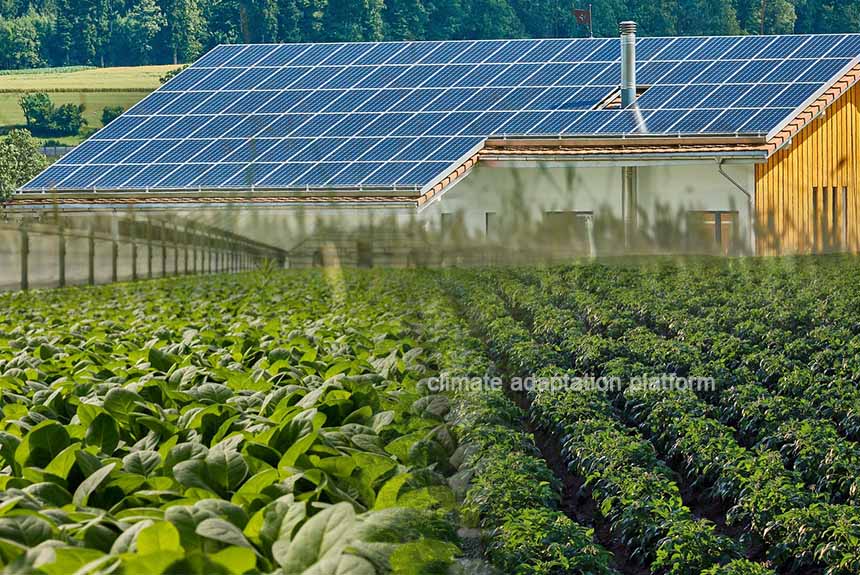Agrivoltaics integrates traditional agriculture or aquaculture practices like livestock or fisheries farming, crop cultivation and solar PV installation, a climate-friendly strategy touted to boost agricultural yield while generating renewable energy.
The WRI reports that the implementation of agrivoltaics in China has flourished since the effort began in 2011. There are more than 500 agrivoltaics projects — including crop cultivation, livestock grazing, aquafarming, greenhouses and tea plantations.
The WRI article “Dual Harvest: Agrivoltaics Boost Food and Energy Production in Asia” gave some examples of the successful implementation of agrivoltaics in China. One is the shrimp farm Yellow River in Dongying City, which has increased its production yield by 50%. Another example is its land-scarce central and eastern regions, where incorporating solar PVs has provided farmers with an additional income stream besides crop and livestock production.
The article also mentioned Hainan’s greenhouse vegetable farms, where solar companies lease the land. They also offer free electricity to farmers and help ensure a year-round supply of leafy vegetables to millions of its residents. Another project is Mongolia’s government-funded agrivoltaic farms, combining solar generation with traditional pastoral practices.
Still, according to the article, the lease of land and solar power generation provide an additional income stream to farmers. Energy generated is free to these farms and sold to the grid, with the sales offering extra revenue to farmers or being used to improve farm equipment or local infrastructure.
The article highlights that other Asian countries like the Philippines and Indonesia could also benefit from China’s examples of implementing agricultural farming projects.
The study “Towards solar extractivism? A political ecology understanding of the solar energy and agriculture boom in rural China” claims that the purported benefits of the widespread implementation to China’s rural farmers are problematic.
The study suggests that the country’s broad adoption of agrivoltaics is a form of solar extractivism. Solar energy projects extract value from rural areas, similar to traditional forms of extractivism like mining or logging, resulting in adverse socio-economic and environmental impacts on local communities.
Looking at the intersection of solar energy development and agricultural practices in rural China through the lens of political ecology, it analysed case studies and information on 421 agrivoltaic projects in China.
The study also “finds that the diffusion of agrivoltaics in the country has been driven neither by technological superiority nor by market-business viability but by a salient logic of solar extractivism in the name of green development”, adding that the stark contrast between discourse and realities reveals that the deployment of agrivoltaics embodies solar extractivism and the implicated “green agenda” served rather as a legitimation strategy for resource extraction”.
The research also warns against the “fetishism of renewables and relevant green infrastructure.” Instead, it aims to deepen understanding of the complexities and consequences of integrating large-scale solar energy projects in agricultural farms in rural China, highlighting issues of sustainability, equity, and local impact.
Sources:
Sila, J., Xu, S., & Apanada, M. (2024, March 23). Dual Harvest: Agrivoltaics Boost Food and Energy Production in Asia. World Resource Institute. Retrieved from https://www.wri.org/insights/agrivoltaics-energy-food-production-asia?apcid=0065832ea341868dfb335e00&utm_campaign=wridigest&utm_medium=email&utm_source=wridigest-2024-05-29
Hu, Z. (2023, February 26). Towards solar extractivism? A political ecology understanding of the solar energy and agriculture boom in rural China. Science Direct. Retrieved from https://www.sciencedirect.com/science/article/abs/pii/S2214629623000488#:~:text=Agrivoltaics%20in%20rural%20China%20prioritize,the%20logic%20of%20solar%20extractivism.



Leave a Reply